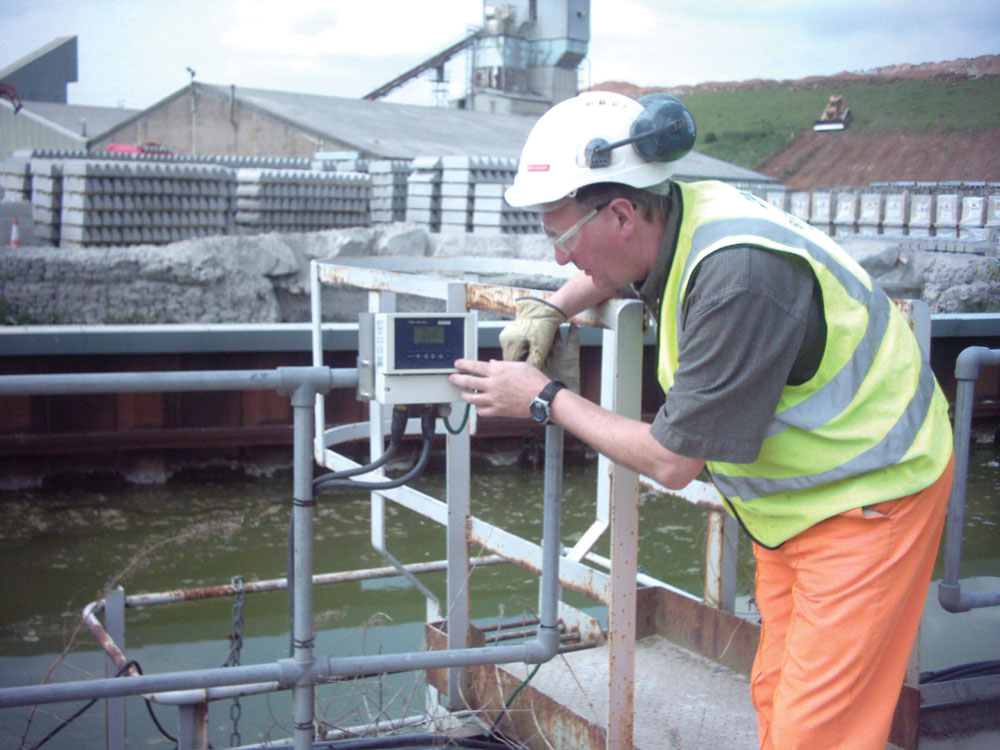Be Aware – MCERTS Could Alter Your Business

Angus Fosten of Partech Instruments looks at the implications for quarry operators
Any manufacturer or operator of a water or waste water treatment plant should not have missed the extension of the Environment Agency’s Monitoring Certification Scheme (MCERTS) to include water-quality monitors. Set up to deliver quality environmental measurements, MCERTS provides for the product certification of instruments, the competency certification of personnel and the accreditation of laboratories and on-site inspection.
Where an application requires the employment of continuous water monitors, MCERTS provides instrument manufacturers with an independent authoritative endorsement of their products. In addition, it gives confidence to potential users that the instrument selected is robust and performs to the standards accepted by the Environment Agency. The first manufacturer to be awarded MCERTS certification for a turbidity monitoring system for effluent discharge installations is Partech Instruments.
MCERTS will have the most impact for those operators with installations falling under the Pollution Prevention and Control (PPC) regulations and who wish to self-monitor effluent flows. The Environment Agency would prefer to see continuous monitoring systems employed where measurement is carried out in situ. This has the benefit of providing almost real-time results as opposed to snapshots of the long-term discharge profile.
The Partech Turbidity 7200 monitor and Turbi-Tech 2000LS sensor monitoring system has been the UK’s market-leading final-effluent monitor for many years. The combination of a highly reliable sensor, easy-to-use monitor and the Turbi-Tech sensor’s fully integrated self-cleaning system provides users with exceptionally low-cost ownership and high confidence in the information gathered.
The system is suitable for monitoring turbidity in effluent discharges, river water and inlet protection applications in ranges from 0–50 to 0–500 FTU. It can also be configured to monitor suspended solids and can be provided with a package of mounting accessories and telemetry devices to suit almost every application.
Ever aware of their environmental responsibilities, Bardon Aggregates ensure that water discharged from the treatment works at their Croft site in Leicester complies with Environment Agency consent levels. The challenge faced by Bardon Aggregates is to ensure that the water used for washing the aggregate is treated effectively on site before discharge into the nearby river Soar. At Croft Quarry the company operate a flocculation dosing plant in conjunction with a settlement lagoon complete with a Partech Turbi-Tech sensor and 7200 monitor for constantly monitoring suspended solids and turbidity.
The company operate to a very tight solids discharge level of 30mg/litre imposed by the Environment Agency, making continuous on-line monitoring the only way of guaranteeing that they do not infringe consent levels. The water treatment plant has a typical waste water inflow of 50 litres/s and the flocculant dosing pump is set in accordance with this. The problem arises when the flow rate increases, making it necessary to increase the speed of the dosing pump. Without access to real-time sampling results, changes to the dosing level may not be wholly accurate leading to overdosing or discharge levels being broken.
Using the Partech Turbi-Tech 2000LS and 7200 monitor, Bardon Aggregates have a constant indicator of the levels of suspended solids within the treatment lagoon. The Turbi-Tech instrument, which uses Infrared 90° light scatter as its measuring principle, is suspended in the lagoon and connected to the 7200 monitor located adjacent to the sampling point. It is a self-cleaning system, which means that its optical surfaces cannot be contaminated and performance adversely affected. The 7200 monitor is designed for external locations and features a large-character display of the measured value combined with a scrolling information bar showing output status.
The complete sampling system is linked to the main control room at the quarry from where management have a constant overview of what is happening within the treatment plant with regard to the effectiveness of the flocculation process.
Armed with this information, immediate and accurate adjustments can be made to the dosing system, which in turn optimizes use of the flocculant agent. The menu structure features set-up wizards that allow simple system configuration and routine calibration.
Under the PPC directive industrial operators are responsible for carrying out monitoring of emissions from installations that fall under the directive. Continuous monitoring parameters covered by MCERTS are: turbidity; pH; ammonia;
COD; TOC; dissolved oxygen; total phosphorous; nitrate; and total oxidized nitrogen. These are some of the most important parameters when monitoring discharges from waste water treatment works and other industrial processes, and in the future only analysers with MCERTS certification will be acceptable.
MCERTS-certified analysers give operators the confidence that they are using equipment of the highest standard and that, by doing so, they are meeting the criteria for safe discharge consents. Should plant operators have any doubts about conformity and whether they fall under the PPC scheme, further information can be found on the MCERTS website (www.mcerts.net).
Partech Instruments, Charlestown, St Austell, Cornwall PL25 3NN; tel: (01726) 879800; email: info@partech.co.uk
